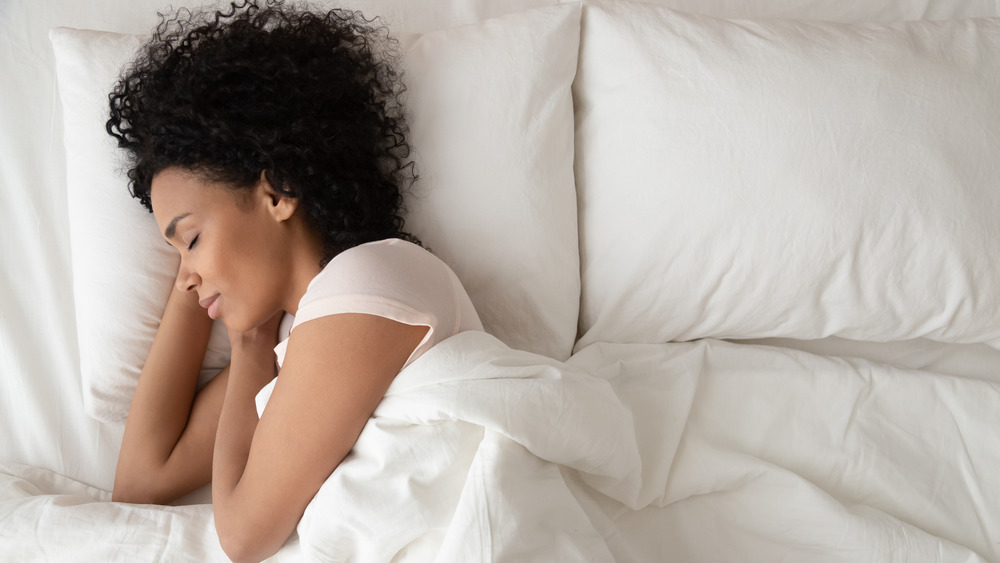How Red Light Actually Affects Your Sleep
We've known for years that blue light isn't good for your sleep. And that's unfortunate, since most of our screens give off blue light (as laid out by Harvard Health Publishing). As bad as blue light is for sleep, however, it seems that red light might be beneficial. According to the U.S. National Library of Medicine, there have already been a few studies done on the subject with about 400 currently in progress. And so far, the research is promising.
To be clear, the studies only involve light on the red wavelength. Regular light bulbs tinted red do not have the same effect as red light. So before you run out to buy a red night light, make sure you're getting the right kind of light. The science and tech is actually new enough that neither Consumer Reports nor the CDC has any information on choosing effective products over potentially high-priced scams.
And with the results coming out of recent studies, scientifically backed products might just be worth waiting for. A 2012 study conducted by several institutes in China found that just 30 minutes of red light therapy a night for two weeks improved participants' melatonin levels and sleep quality.
There were some drawbacks to this study, however. It had only 20 participants — which is an incredibly small sample size. It also focused specifically on athletes. As a 2012 study from Spain concluded, melatonin and exercise tend to work together in a promotional cycle. The red light study may have accounted for this, but it isn't clear in the literature.
What the red light studies say
While some research indicates that red light may be good for melatonin production, other studies have found that it may also be a good way to wake people up. Everyone knows about the post-lunch slump. It's a major loss of productivity in offices all over the world and is so widespread that the New York Times did a whole article on its causes.
A 2012 study from Rensselaer Polytechnic Institute might offer some hope. The study found that at certain levels, red wavelength light mixed with natural light helped wake people up. A 2019 study from the same institute found that red light may help with sleep inertia (that groggy feeling that sticks around when you first wake). The study clarified that the red light had to be at low levels that wouldn't affect melatonin production.
At low levels, it seems that red wavelength light can help wake you up, and when the light becomes more saturated it may help with melatonin production. This is all great news for people with sleep issues, so long as the study results are verified by further research. Until then, keep avoiding that blue light and keep an eye on those ongoing studies.


